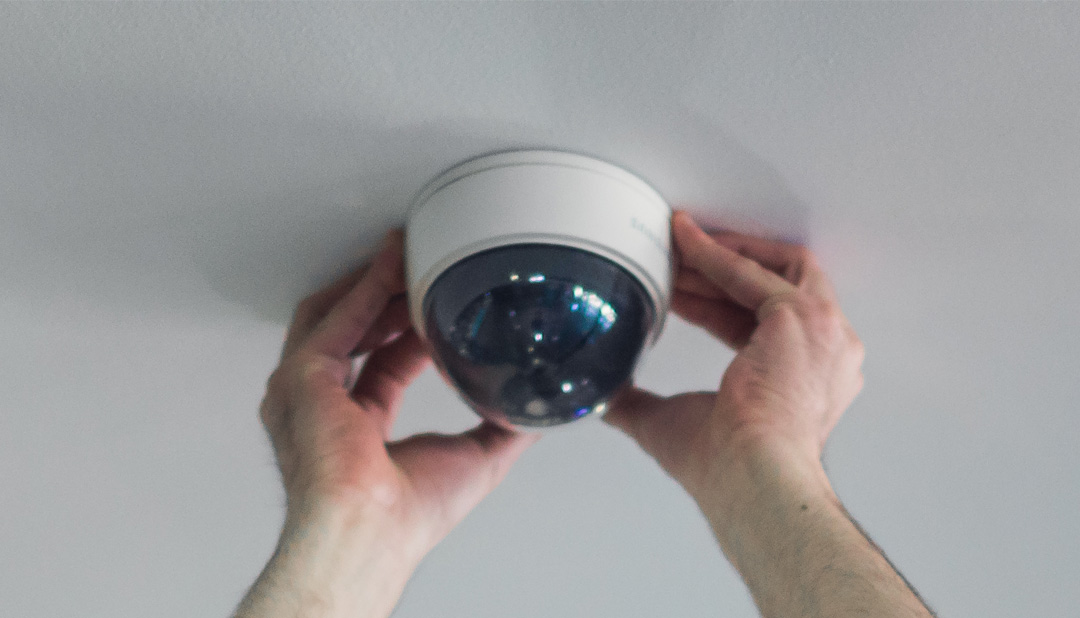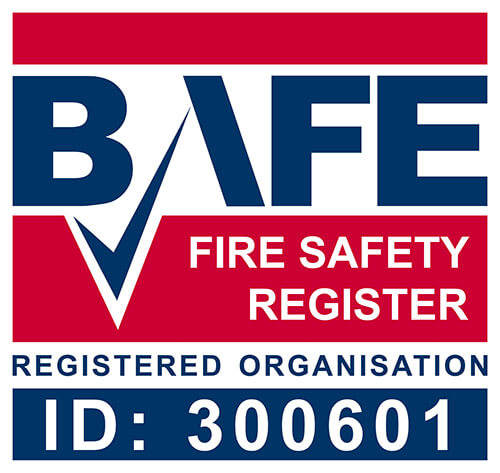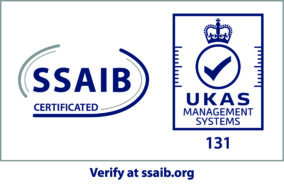If you’re thinking about having a CCTV system installed, there are a few things that you may need to consider when making your decision. The type of system that is best for you will depend a lot on your individual needs, premises and budget, but, with all of the technical jargon that is often used, it can be difficult to make an informed choice. So, here’s what you need to know:
Dome CCTV Cameras
Overview
A dome CCTV camera gets its name from the dome-shaped casing that the camera sits in. Whilst these are relatively discreet CCTV cameras in appearance, this doesn’t stop them from deterring criminals. This is because the dome casing makes it really difficult for people to see which direction the camera is pointing. This creates an air of uncertainty for potential thieves or vandals approaching from all directions.
Main benefits
- Unobtrusive design means it’s easy to fit
- Suitable for indoor and outdoor use
- Vandal resistant dome means it is harder to interfere with the camera
- 360-degree rotation of the camera so you can cover all angles
Ideal uses
This is the best type of CCTV camera for shops, restaurants, casinos and hotels because the design allows you to monitor a wider angle at your premises. Many also consider this option to be the best indoor CCTV camera as it can be placed on a strategic point of the ceiling to cover all angles of the room.
Bullet CCTV Cameras
Overview
Bullet CCTV cameras have an iconic design that is highly visible. They are cylindrical in shape and are capable of observing long distances. Bullet cameras are most commonly placed outdoors so their casings are made resistant to water, dust and dirt.
Main benefits
- Highly visible so acts as a deterrent
- Resistant to dirt in challenging environments
- Provides surveillance over long distances
- Casing also protects against glare and rain
Ideal uses
Bullet cameras can be used to good effect in a range of industries such as manufacturing, property management and farming. They not only record good quality pictures but also send out a message to passers-by that your premises is under surveillance. That’s why they have traditionally offered the best CCTV for outside operation.
PTZ Pan Tilt & Zoom Cameras
Overview
With a PTZ (Pan Tilt & Zoom) camera, your security team can have complete control on what is recorded. At the touch of a button, the camera lens can pan left and right, tilt up and down or zoom in and out. It’s the ideal choice if you have a security guard who is monitoring a live video feed on site.
Main benefits
- Optical zoom on these cameras means you can focus closely in on subjects
- Pan and tilt feature provides 360 degree field of vision
- Image resolution is usually impeccable so facial features can be distinguished
- Security team have full control of recording and can react to live situations
Ideal uses
This is the best CCTV camera for remote viewing. It is really popular in large retail environments and is regarded as the best CCTV for business premises that have a specific valuable object to protect. For example, a museum could program the camera to pan to a particular entry or exit point when it detects movement. So even when it is not being controlled remotely, the camera can cover a much larger area and do the same job of several static cameras.
Day/Night CCTV Cameras
Overview
These cameras have been built specifically to operate effectively, regardless of how well lit their environment is. During both daytime and night-time, they will record clear video images that will not be obscured by differing light conditions. This is achieved through their extra sensitive imaging chips.
Main benefits
- Clear recording in low light
- They usually record in both colour and black and white
- Can function despite glare, direct sunlight, reflections and poor lighting
- Casing protects the camera against the elements for outside surveillance
Ideal uses
There are various CCTV camera types suited to outside use but the extra sensitive imaging makes this one unique. It is therefore the ideal CCTV system for business premises that require round the clock CCTV monitoring in an outdoor environment with varying light conditions.
Infrared/Night Vision CCTV Cameras
Overview
As the name suggests, these cameras are designed to operate optimally in pitch black conditions. They achieve this by using infrared technology. Infrared models are more expensive than day/night cameras and those opting for this option usually do so because night recording is vital to the security of their business.
Main benefits
- Infrared LEDs allow clear recording even in pitch black environments
- An infrared cut filter activates in the daytime for clear images in lighter conditions
- Can capture images even in the presence of fog, dust or smoke
- Records colour imagery in the daytime and black and white at night
Ideal uses
This is the best CCTV camera for night vision functionality. It’s therefore the ideal choice for those who need ultra-reliable recording in complete darkness. For example, banks, farms and manufacturing plants.
Network/IP CCTV Cameras
Overview
These cameras share live footage across the internet so images can be easily accessed from anywhere on the globe. The bandwidth of the video is compressed, in order to make the
online feed reliable. Archive footage is stored on network video recorders (NVRs) or on secure software for later access.
Main benefits
- Footage can be viewed online from anywhere in the world
- Easily accessible archive footage
- Easy setup as co axial cables and a computer station are not required
- Low maintenance
Ideal uses
A network or IP CCTV camera is the ideal choice for business owners who are often away from site and on the move. Footage can be viewed from anywhere in the world, via a PC, laptop or mobile phone.
High Definition (HD) CCTV Cameras
Overview
HD CCTV cameras offer an unrivalled picture quality that delivers high clarity images. Depending on your budget, they can deliver resolutions of 720p, all the way up to 4K. Therefore, there’s no danger that the subject of recordings will ever appear grainy or distorted.
Main benefits
- High definition pictures capture subjects in perfect clarity
- Extra clarity can also be achieved with zoom function
- Available on most CCTV models such as domes and bullets
- Crystal clear imagery provides undeniable criminal identification
Ideal uses
High definition cameras are particularly useful for use in environments where there is a high risk of theft. Businesses such as banks and casinos should opt for HD cameras, in order to ensure that visitors to their premises are captured in perfect clarity. The footage recorded will be able to provide undeniable identification in the event of a crime being committed.
Resolutions
CCTV systems can record in a certain amount of FPS (frames per second). This means that your footage can be shown to ‘flow’ in different ways. For example, when recording a low FPS, the footage will not show in ‘real time’ (the amount of FPS that the eye can see), meaning that it will jump from frame to frame, lowering the quality of the footage.
Recording can be set up in real time on certain systems, which is approximately 25fps, meaning that the ‘flow’ of the footage will appear the same speed as it would have done in real life
Similarly, CCTV cameras will record in different resolutions, for example, you can have SD (Standard Definition) or HD (High Definition), which relates to the quality of the image.
Images are made up of ‘pixels’ (essentially small coloured squares that group together to create the image), therefore, the more pixels that a camera can capture, the better quality the images will be.
These pixels are very small, so they are measured in ‘Megapixels’ (one megapixel is 1000000 pixels). In a standard definition CCTV camera there are 0.4 Megapixels, where as an HD camera captures over 2.1 Megapixels and beyond. This is the reason that the difference in image quality is so substantial.
DVRs
To store and stream footage your cameras will need to be connected to a DVR (Digital Video Recorder) or a NVR (Network Video Recorder), which will be the device through which you control your system. These come with a number of different recording formats, capacities and connectivities.
Your recordings can be stored either on an internal or external hard drive, on a USB storage device, or on a disk.
Another good function of modern-day systems is remote viewing; this requires a broadband connection within the premises, but will enable you to access your closed circuit television system from any other place in the world (as long as you have internet access). Using a smart phone, tablet or computer you are able to log-in to your CCTV system, using your secure username and password, and remotely view your recording.
You will even enable you to stream live footage directly to your computer, smart phone or tablet, which is ideal for people who have their own business, or for people who have more than one property (a holiday home for example).







